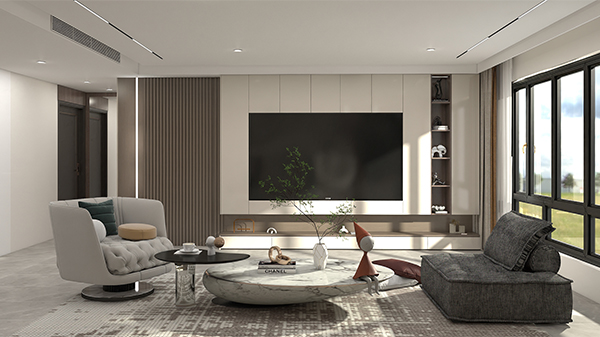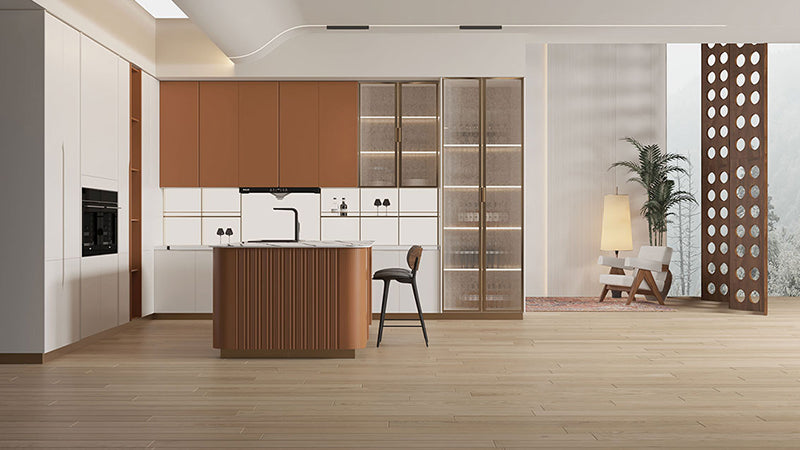How to Decorate Kids’ Rooms
A child's room serves multiple functions: it's their bedroom, living room, and play space. It's important to incorporate elements that encourage observation, thought, and play. Most parents agree that providing a nurturing and stimulating environment for their children is paramount. With Children's Day approaching, GoldenHome has compiled key points for decorating a kid's room to help you create a perfect space for your little ones.

Point 1: Safety and Environmental Protection
Safety is a top priority in a child’s room, as young children cannot always look after themselves. Here are some safety tips:
Guardrails: Install guardrails on windows to prevent falls.
Non-Slip Flooring: Choose skid-proof flooring to prevent accidents while children run and play.
Electrical Safety: Place electrical sockets higher up to prevent electric shocks for younger children.
Environmental protection is equally important. Many interior decoration materials on the market contain harmful substances. Even low levels of these substances can be dangerous for growing children. Therefore, choose natural and eco-friendly materials whenever possible. GoldenHome advocates for the use of green decorating materials to ensure a healthy interior environment.
Point 2: Choose Active Colors
Color significantly affects emotions and behavior, especially in children who are more sensitive to its impact. Choosing the right color for a child’s room is crucial:
Inspire and Excite: Use vibrant colors to stimulate and energize.
Soothing Shades: Incorporate calming colors to create a peaceful environment.
Personal Preferences: Consider the child’s favorite colors, as they often have natural preferences.
Psychological Effects: For instance, if your child is introverted, warm-toned colors can help bring out their social side.
Point 3: Adapt the Room as Children Grow
As children grow, their needs and interests evolve. Design the room to accommodate these changes:
Flexible Design: Plan for the room to change from a play area to a study space as the child ages.
Furniture Choices: For young children, a wooden plank bed or a firm spring bed is ideal. Consider beds with pull-out drawers for additional storage.
Detailed Considerations
Creative Period: Children aged 4 to 7 are in a highly creative phase. During this time, their room should emphasize entertainment and play.
Study Space: As they grow older, the room can be restructured to include a study area to support their educational needs.
By focusing on these points, you can create a safe, vibrant, and adaptable room that will grow with your child, providing them with a perfect environment to learn, play, and thrive.

Point 1: Safety and Environmental Protection
Safety is a top priority in a child’s room, as young children cannot always look after themselves. Here are some safety tips:
Guardrails: Install guardrails on windows to prevent falls.
Non-Slip Flooring: Choose skid-proof flooring to prevent accidents while children run and play.
Electrical Safety: Place electrical sockets higher up to prevent electric shocks for younger children.
Environmental protection is equally important. Many interior decoration materials on the market contain harmful substances. Even low levels of these substances can be dangerous for growing children. Therefore, choose natural and eco-friendly materials whenever possible. GoldenHome advocates for the use of green decorating materials to ensure a healthy interior environment.
Point 2: Choose Active Colors
Color significantly affects emotions and behavior, especially in children who are more sensitive to its impact. Choosing the right color for a child’s room is crucial:
Inspire and Excite: Use vibrant colors to stimulate and energize.
Soothing Shades: Incorporate calming colors to create a peaceful environment.
Personal Preferences: Consider the child’s favorite colors, as they often have natural preferences.
Psychological Effects: For instance, if your child is introverted, warm-toned colors can help bring out their social side.
Point 3: Adapt the Room as Children Grow
As children grow, their needs and interests evolve. Design the room to accommodate these changes:
Flexible Design: Plan for the room to change from a play area to a study space as the child ages.
Furniture Choices: For young children, a wooden plank bed or a firm spring bed is ideal. Consider beds with pull-out drawers for additional storage.
Detailed Considerations
Creative Period: Children aged 4 to 7 are in a highly creative phase. During this time, their room should emphasize entertainment and play.
Study Space: As they grow older, the room can be restructured to include a study area to support their educational needs.
By focusing on these points, you can create a safe, vibrant, and adaptable room that will grow with your child, providing them with a perfect environment to learn, play, and thrive.



